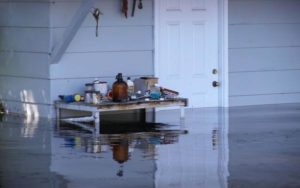New federal report raises serious questions
 Regular readers of this newsletter know that I’m a big proponent of flood insurance, whether federal or private, especially in a state like Florida, where “if it can rain, it can flood.” I served as an advisor on passage of Florida’s two key laws (SB 1094 and SB 542) to incentivize a private market and negotiated needed changes leading to successful passage of the national Private Primary Residential Flood Insurance Model Act in 2020. Then – as now – I have serious doubts whether a federal law is being enforced that requires all properties in a FEMA-designated flood zone with federally-backed mortgages carry flood insurance. My doubts have grown with the release of a new report.
Regular readers of this newsletter know that I’m a big proponent of flood insurance, whether federal or private, especially in a state like Florida, where “if it can rain, it can flood.” I served as an advisor on passage of Florida’s two key laws (SB 1094 and SB 542) to incentivize a private market and negotiated needed changes leading to successful passage of the national Private Primary Residential Flood Insurance Model Act in 2020. Then – as now – I have serious doubts whether a federal law is being enforced that requires all properties in a FEMA-designated flood zone with federally-backed mortgages carry flood insurance. My doubts have grown with the release of a new report.
Earlier this month, the Federal Reserve System published a report titled Pilot Climate Scenario Analysis Exercise. The exercise was conducted last year between the Fed and six large bank holding companies: Bank of America, Citigroup, Goldman Sachs, JPMorgan Chase, Morgan Stanley, and Wells Fargo. The report declares that the pilot exercise was exploratory in nature and does not have consequences for bank capital or supervisory implications. We think it should have consequences, as there is some cause for alarm here.
The report acknowledges the federal flood insurance requirement on Special Flood Hazard Area (SFHA) properties with federally-backed mortgages, as required under the Flood Disaster Protection Act. The act mandates that lenders require it as part of the loan process. Among the report’s troubling admissions:
- “All participants reported data gaps related to insurance, including insurance coverage details, replacement cost value, and deductibles, particularly for CRE (Commercial Real Estate, see table 6). While participants have some level of hazard insurance information, it is not always consistently recorded or easily aggregated. As a result, participants generally had to rely on assumptions to estimate the degree of insurance mitigation for physical risk shocks. (Page 27)
- Table 6 under flood insurance reads, “Most participants assumed FEMA flood insurance coverage for properties in designated SFHA areas. Outside of SFHA areas, some participants assumed no coverage due to lack of data and others relied on underlying coverage data.”
There are other related troubling assumptions on pages 25 and 27. Notice a common thread here? It’s the word “assume” or a variation. We know what happens when you assume. To be fair, this was an exercise, complete with assumptions, but no hard facts. But the admission that data is lacking is significant and deserves further inquiry. The questions that need definitive answers: Is the federal flood insurance requirement on SFHA properties with federally-backed mortgages being enforced? If so/how so? And by whom? And if so, what percentage of properties do indeed have the required flood insurance and what percentage do not?
Not only is the security of our financial institutions at risk here if they are holding notes on future flooded properties later discovered as without insurance, but potentially entire communities that may not be rebuilt without it. You can explore this and other related topics on our Flood Insurance and Resilience webpage.
LMA Newsletter of 5-28-24

